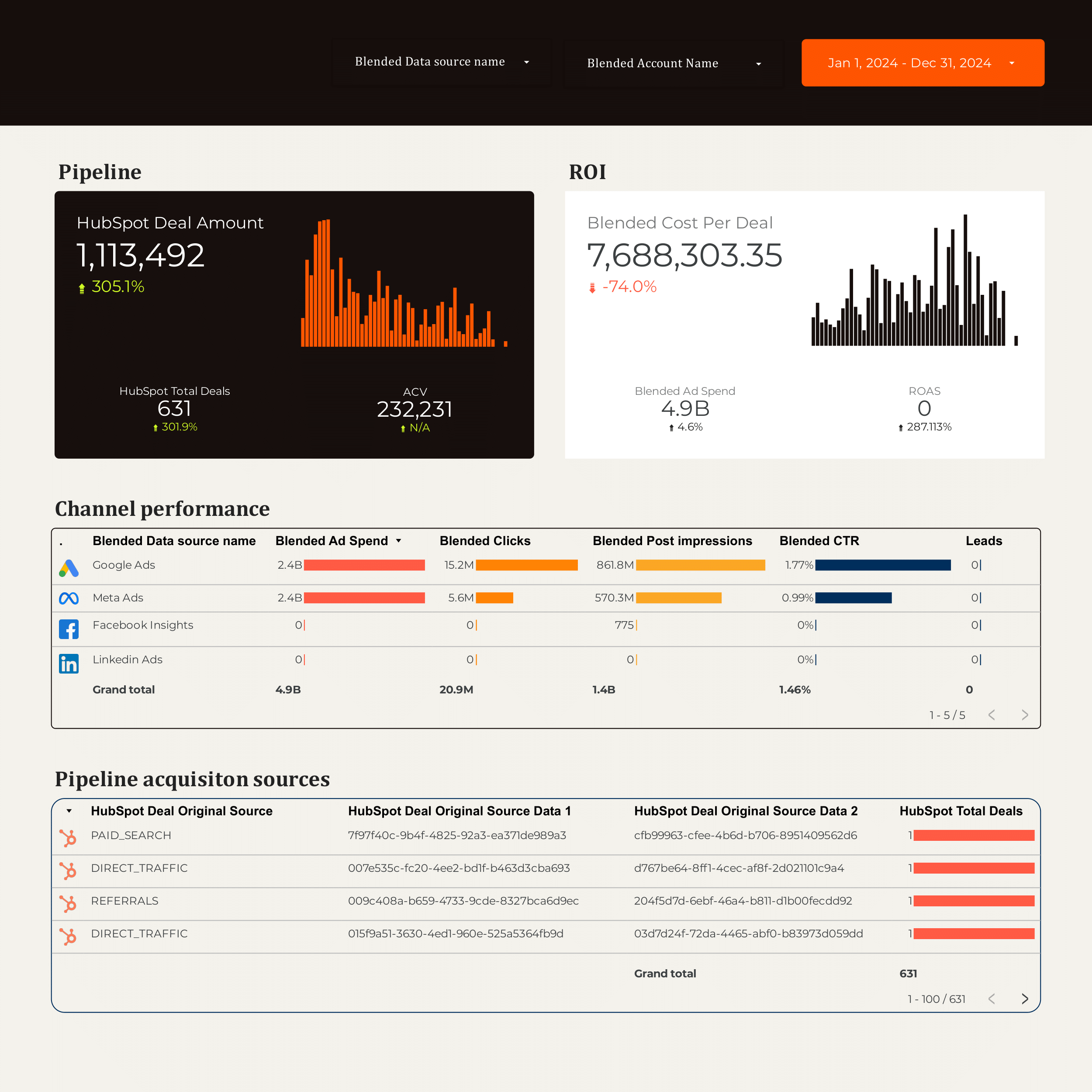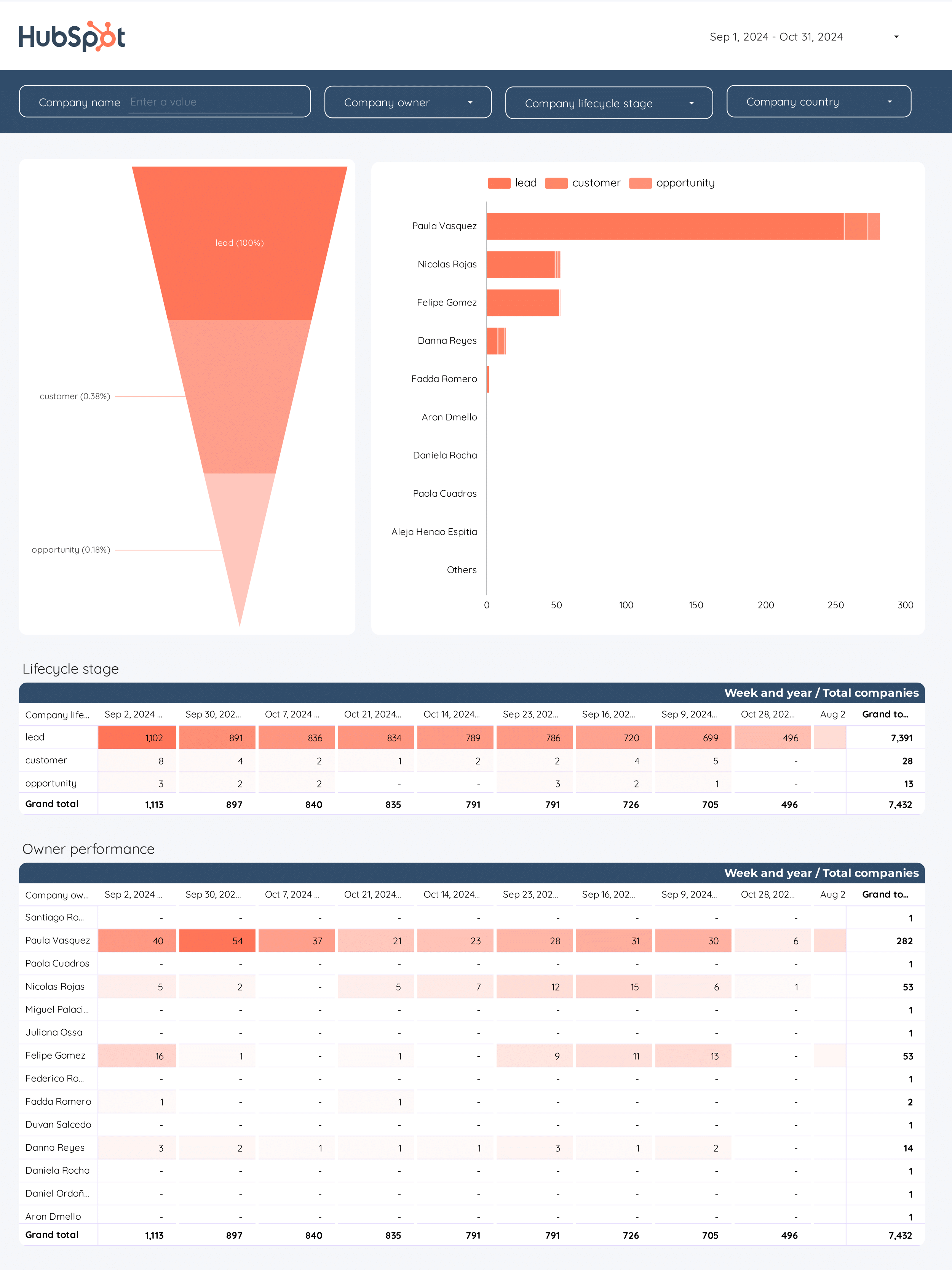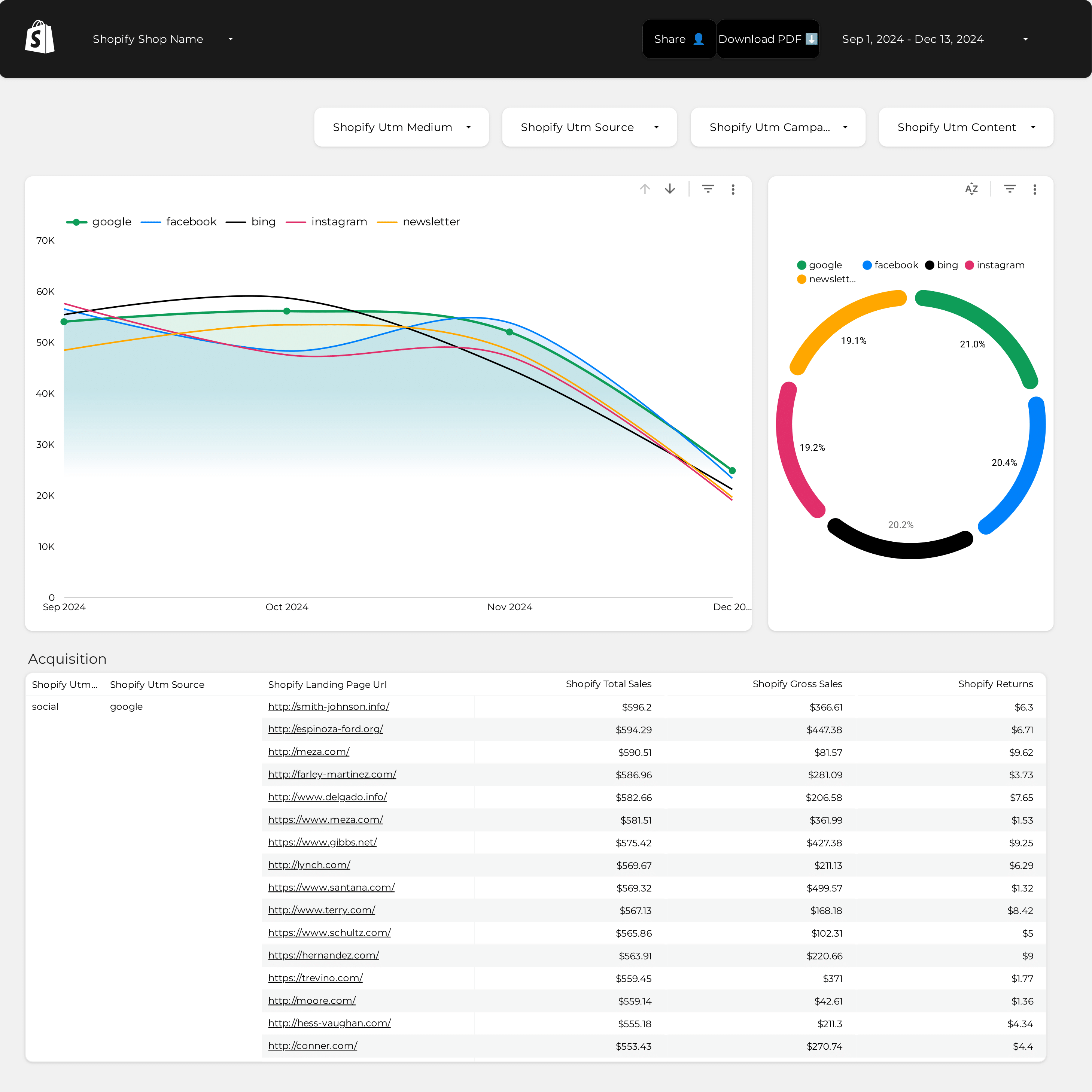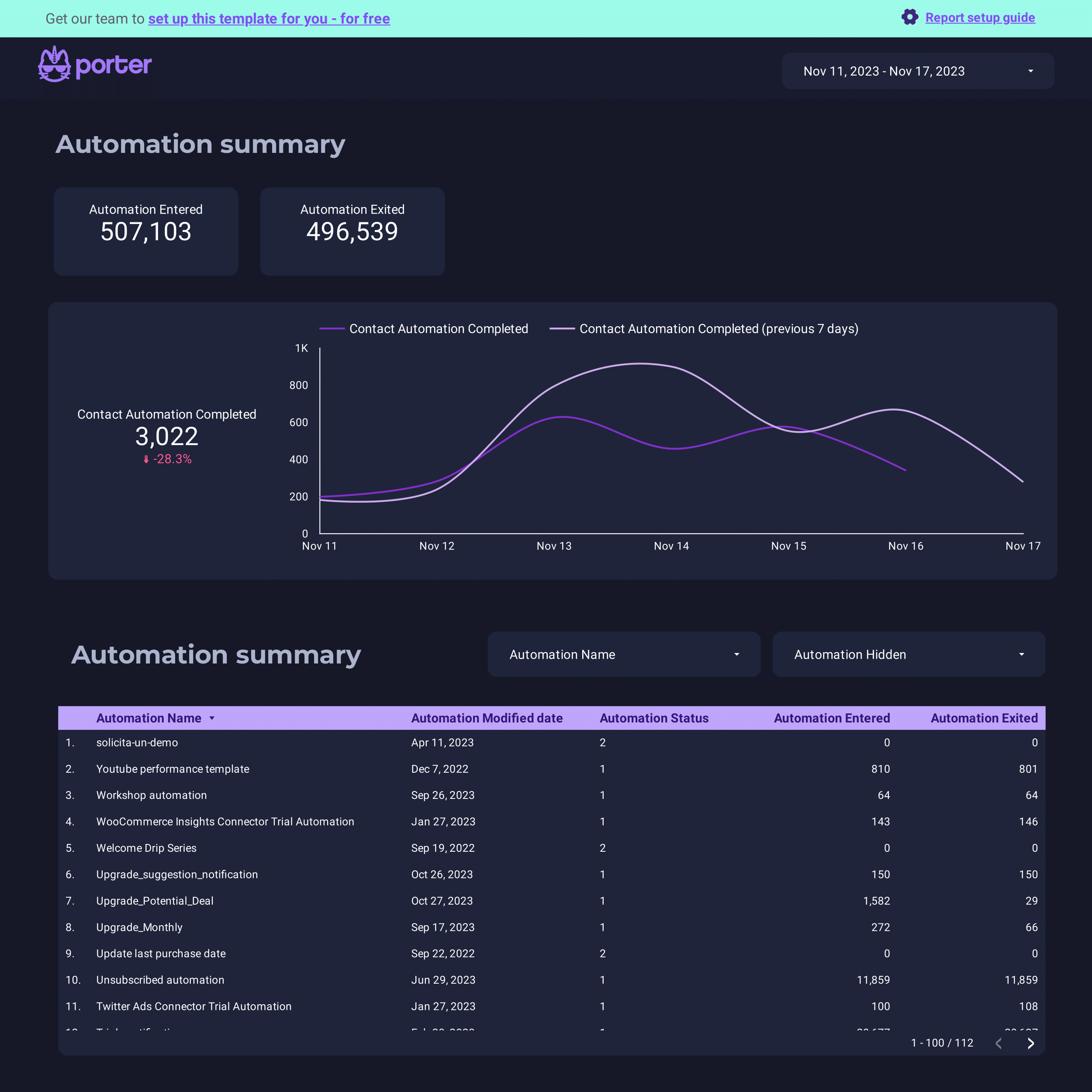
ActiveCampaign Report template for Marketing teams and agencies
Track and measure key metrics with the ActiveCampaign automation report template. Analyze conversion rates, ROI, and click-through rates across demographics and psychographics. Integrate CRM and email marketing data for actionable insights. Ideal for B2B marketing teams to optimize performance and achieve specific goals.
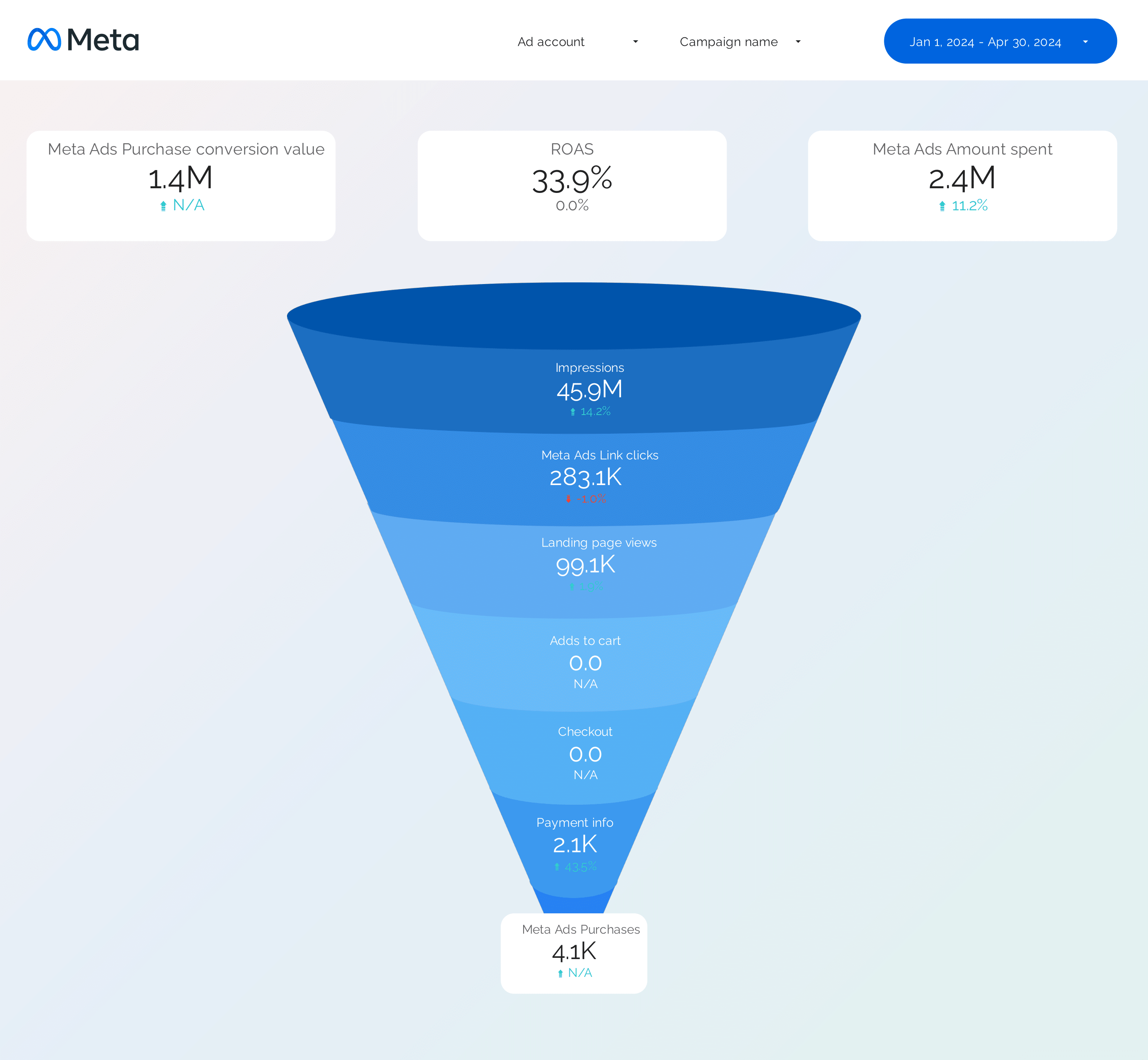
Facebook Ads Funnel Report template for Marketing teams and agencies
Optimize your Facebook Ads Funnel with this report template. Track CTR, conversion rate, CPA, and more. Analyze audience targeting, ad creative, and placement strategy. Segment by demographics and behavior. Ideal for PPC and paid media specialists to enhance campaign performance and achieve marketing objectives. Perfect for understanding reach, impressions, and organic search traffic.
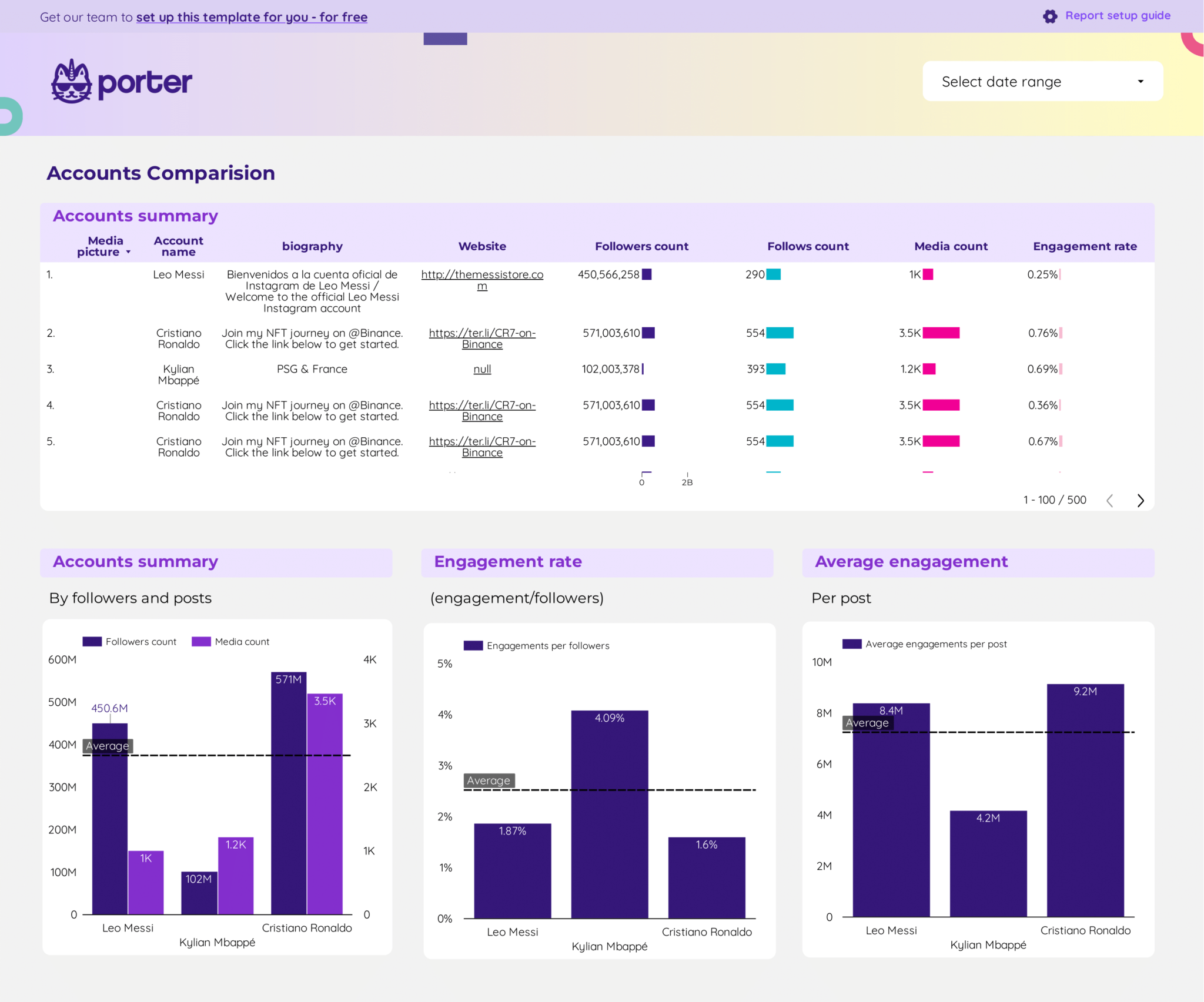
Instagram Insights competitors Report template for Marketing teams and agencies
Optimize your strategy with the Instagram Insights competitors report template. Analyze CTR, conversion rate, CPA, likes, and engagement. Segment by audience, goals, and duration. Leverage social media and Instagram public data for actionable insights. Perfect for marketing teams to track performance across demographics and timeframes.
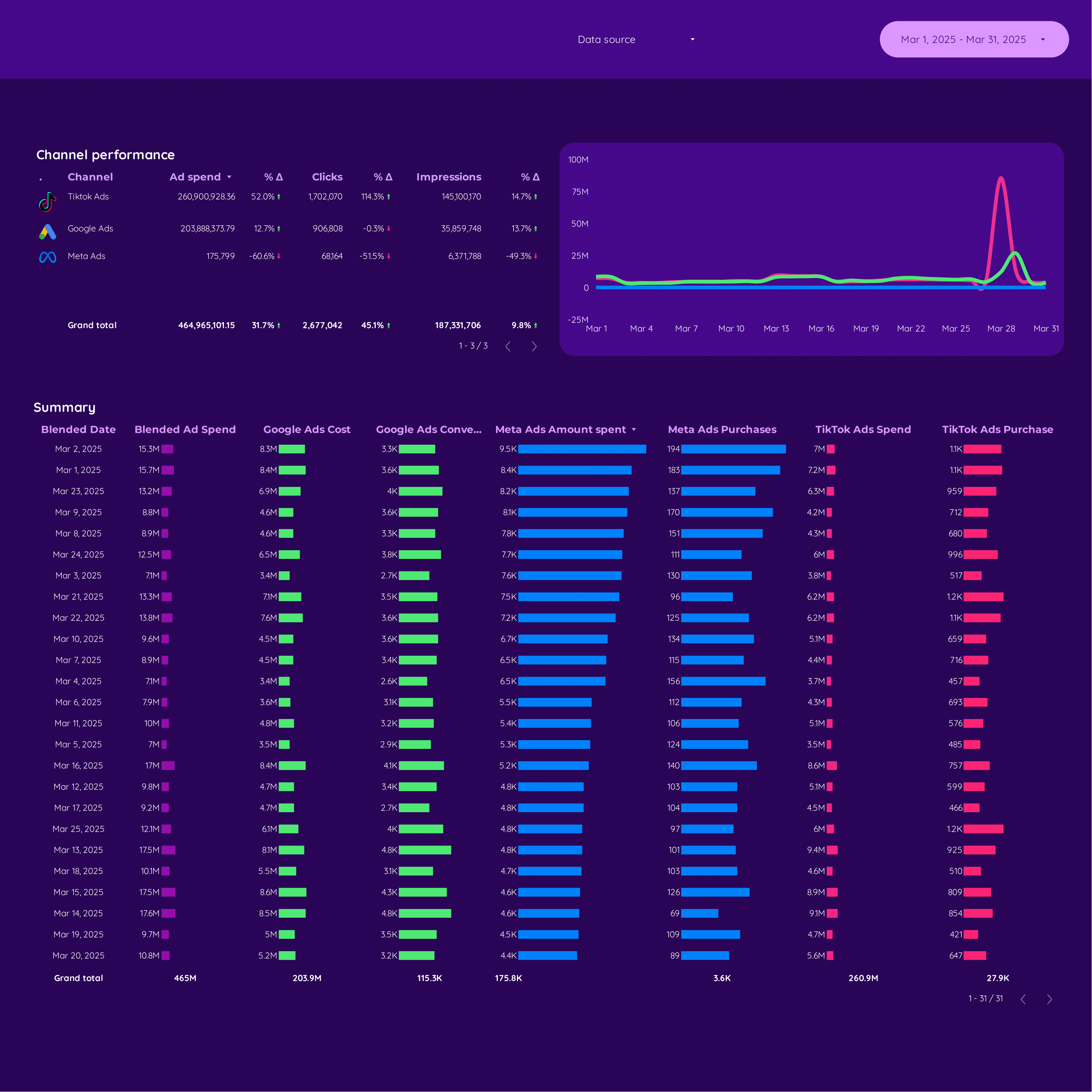
Paid media E-commerce Report template for Marketing teams and agencies
Track metrics like cost per conversion, ROAS, and CTR with the Paid media E-commerce report template. Analyze data from Google Analytics 4, Shopify, Google Ads, and Facebook Ads. Segment by audience, ad placement, and time. Perfect for marketing teams to measure performance and refine strategies.
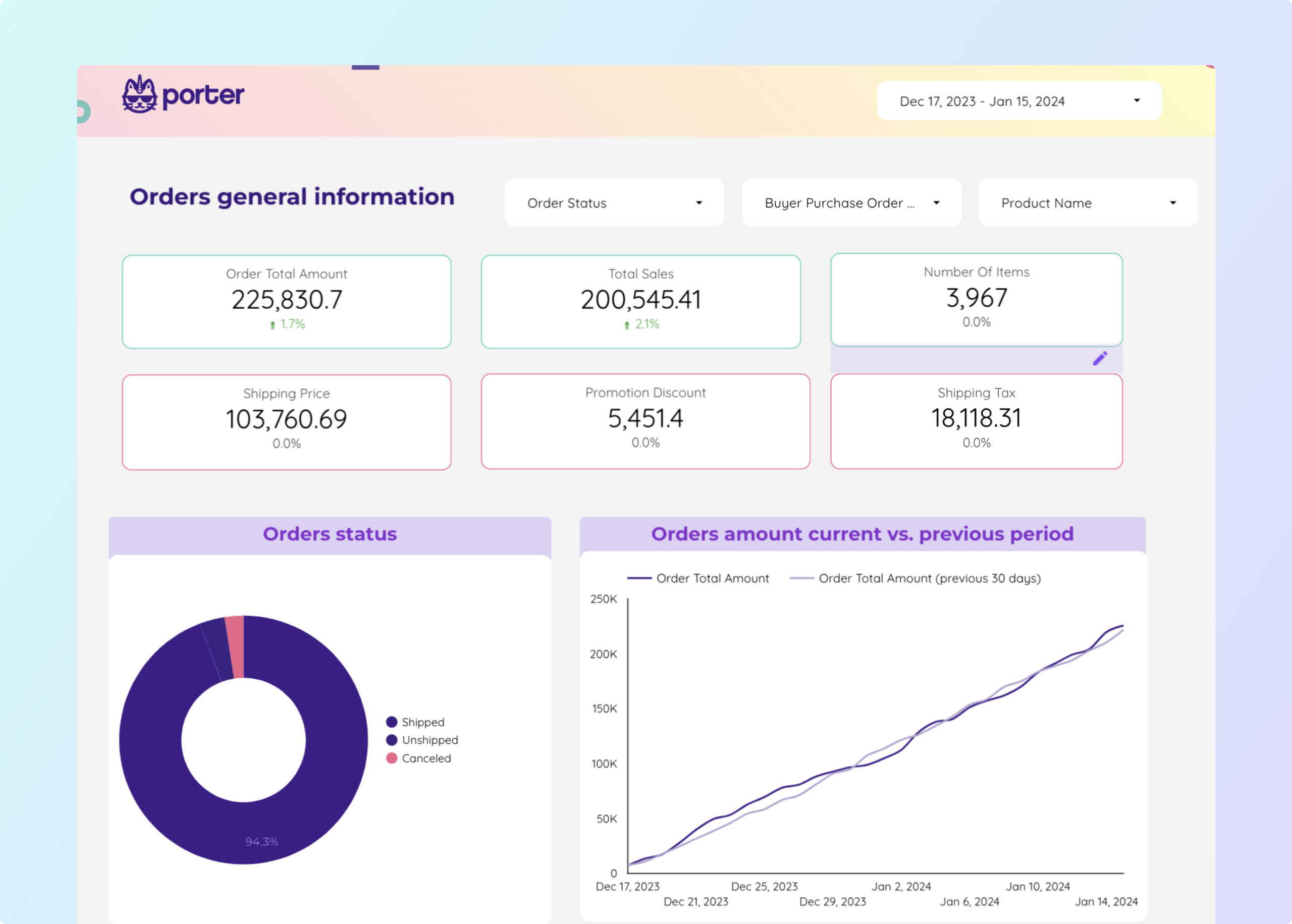
Amazon Seller Central Report template for Marketing teams and agencies
Analyze key metrics with this Amazon Seller Central report template. Track GMV, AOV, and CPA. Segment by demographics, ad format, and time. Perfect for e-commerce marketing teams to consolidate data from Amazon Seller Central. Optimize performance and refine strategies for targeted audiences. Measure success across platforms efficiently.
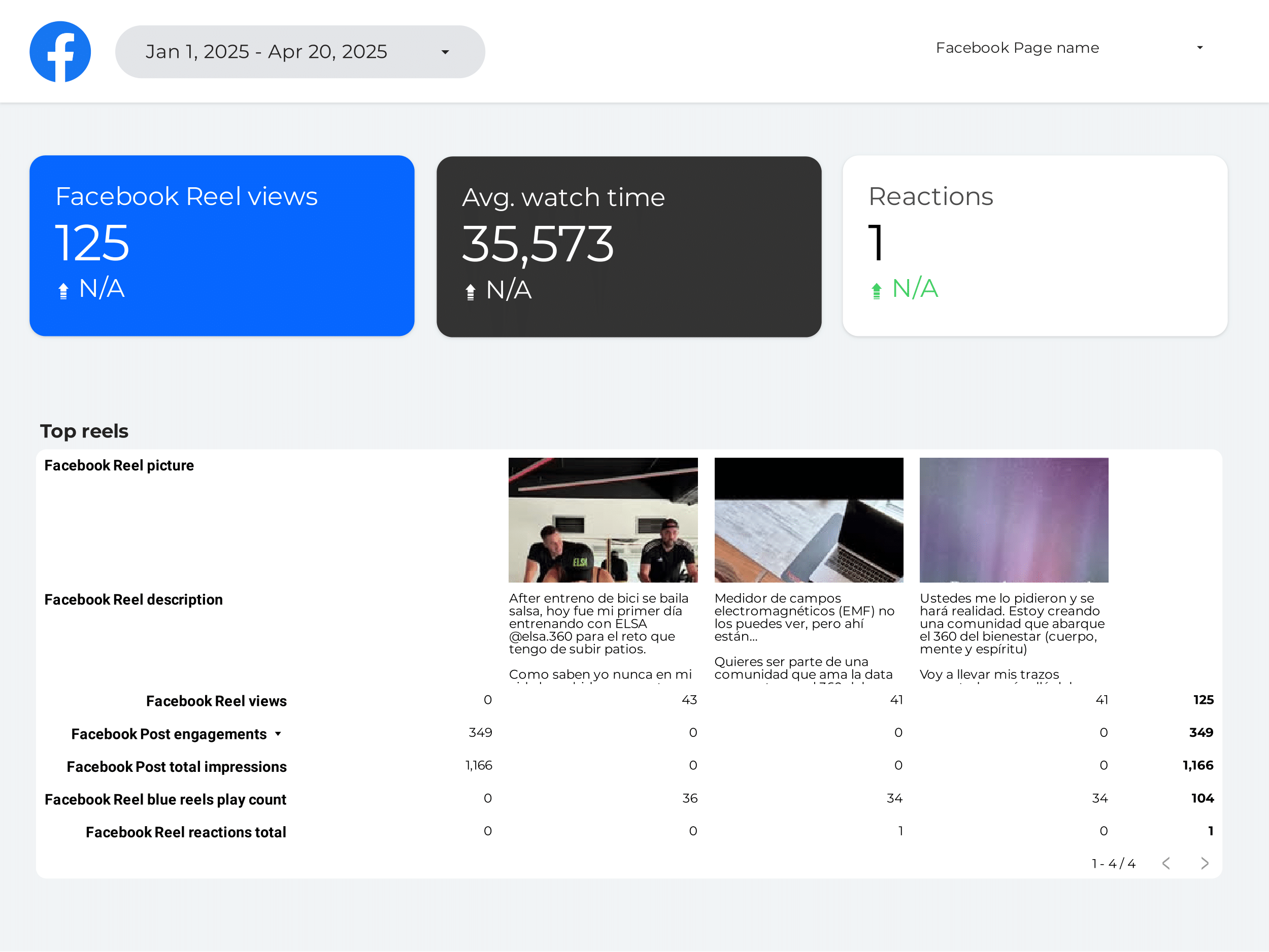
Facebook Insights Report template for Marketing teams and agencies
Optimize your social media strategy with this Facebook Insights report template. Track CTR, conversion rate, and engagement. Analyze metrics by age, gender, and location. View insights by hour, day, or month. Perfect for marketing teams to measure performance and achieve objectives.
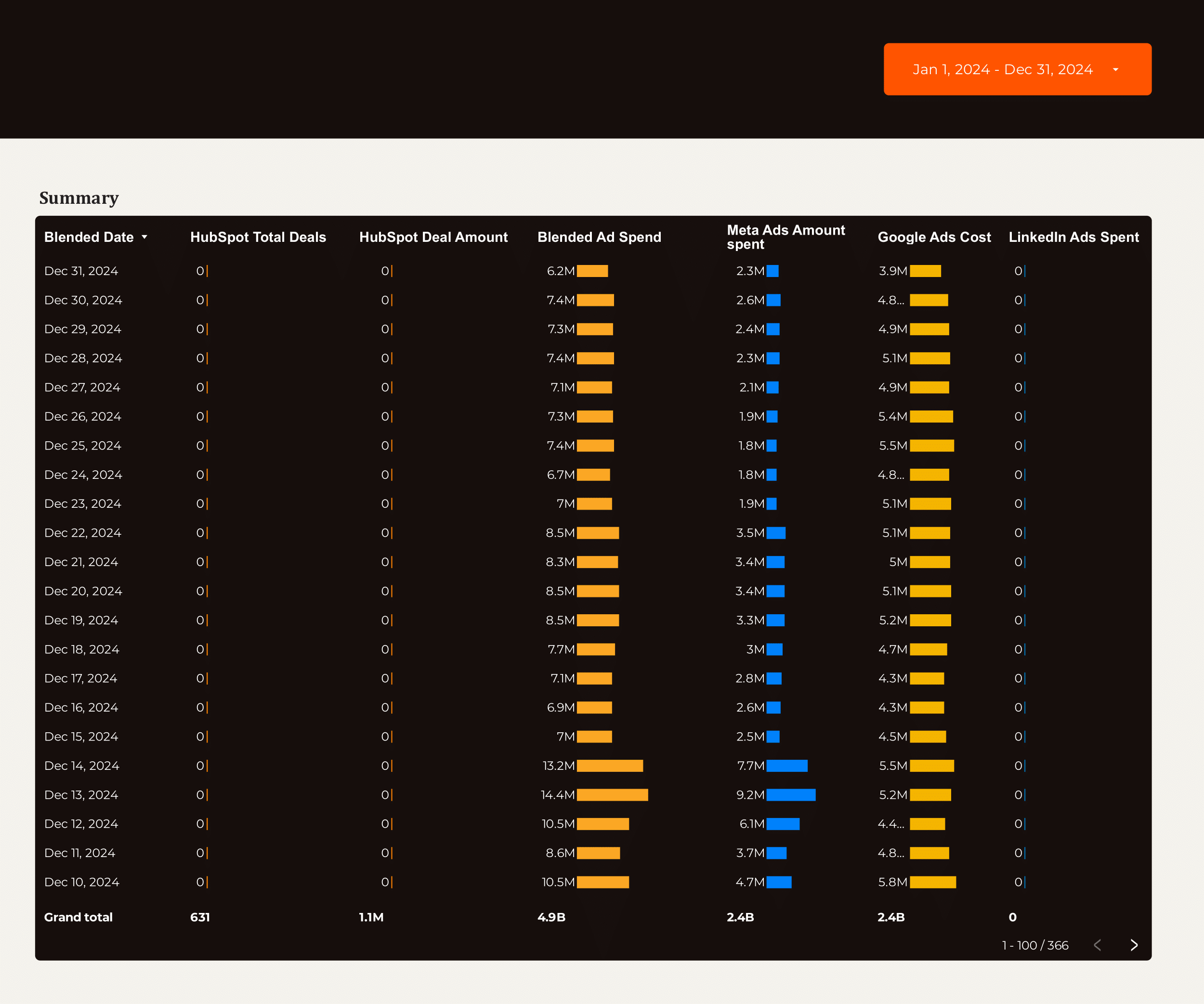
Lead generation Report template for Marketing teams and agencies
Optimize your strategy with the Lead generation report template. Track conversion rates, cost per conversion, and ROI. Analyze B2B, CRM, Email Marketing, and Facebook Ads data. Segment by audience, demographics, and behavior. Measure SQLs, sales cycle length, and CRM contact performance. Ideal for marketing teams seeking actionable insights.
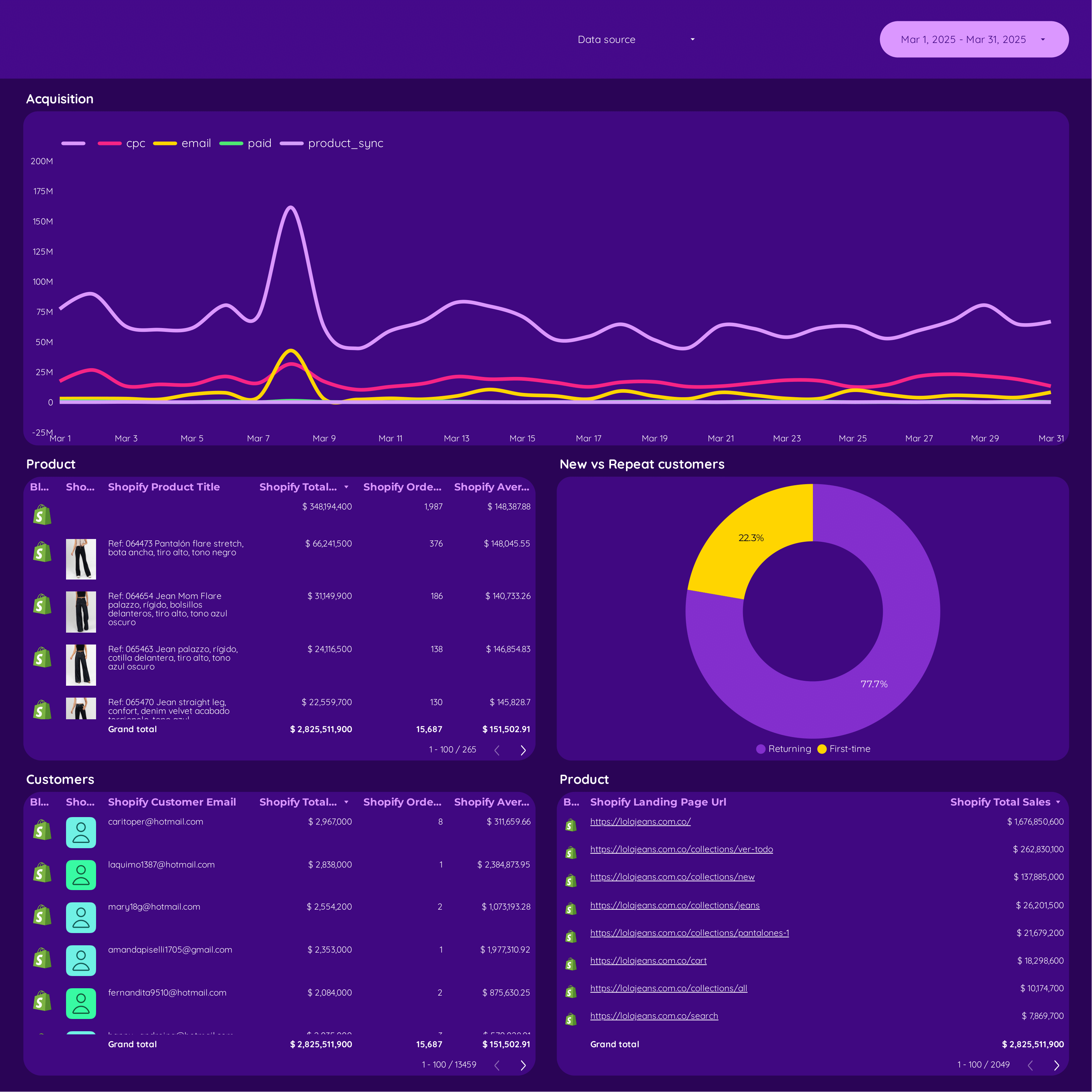
Sales Report template for Marketing teams and agencies
Optimize your strategy with this Sales report template. Track metrics like conversion rate, cost per conversion, and CTR. Analyze geographical, time, and demographic breakdowns. Ideal for E-commerce and B2B marketing teams to measure performance and achieve goals effectively.
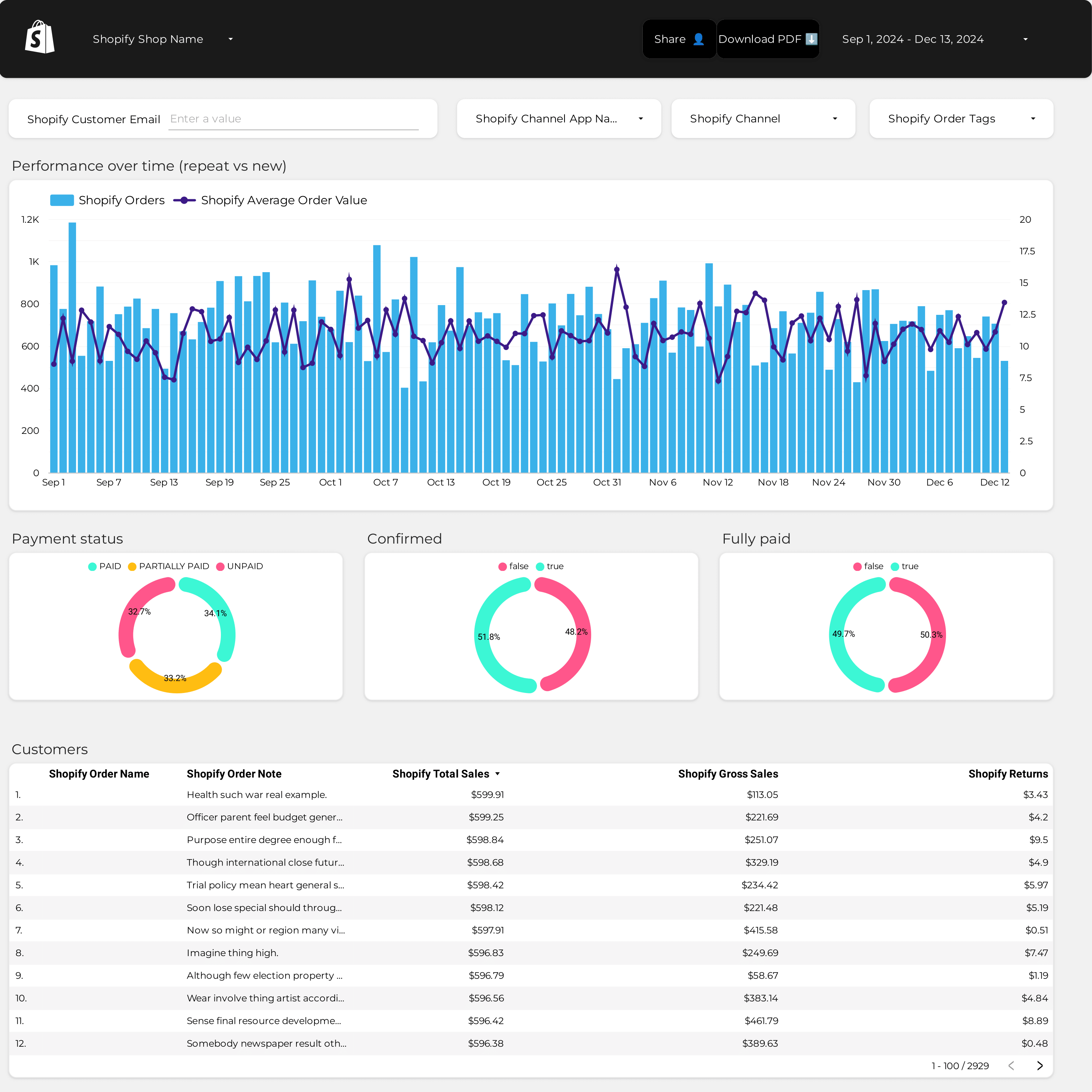
AOV Report template for Marketing teams and agencies
Analyze key metrics with the AOV report template. Measure conversion rates, average order value, and CPC. Integrate data from E-commerce, Google Analytics 4, Shopify, Google Ads, and Facebook Ads. Segment by audience, campaign, and time. Perfect for marketing teams to track performance and refine strategies.
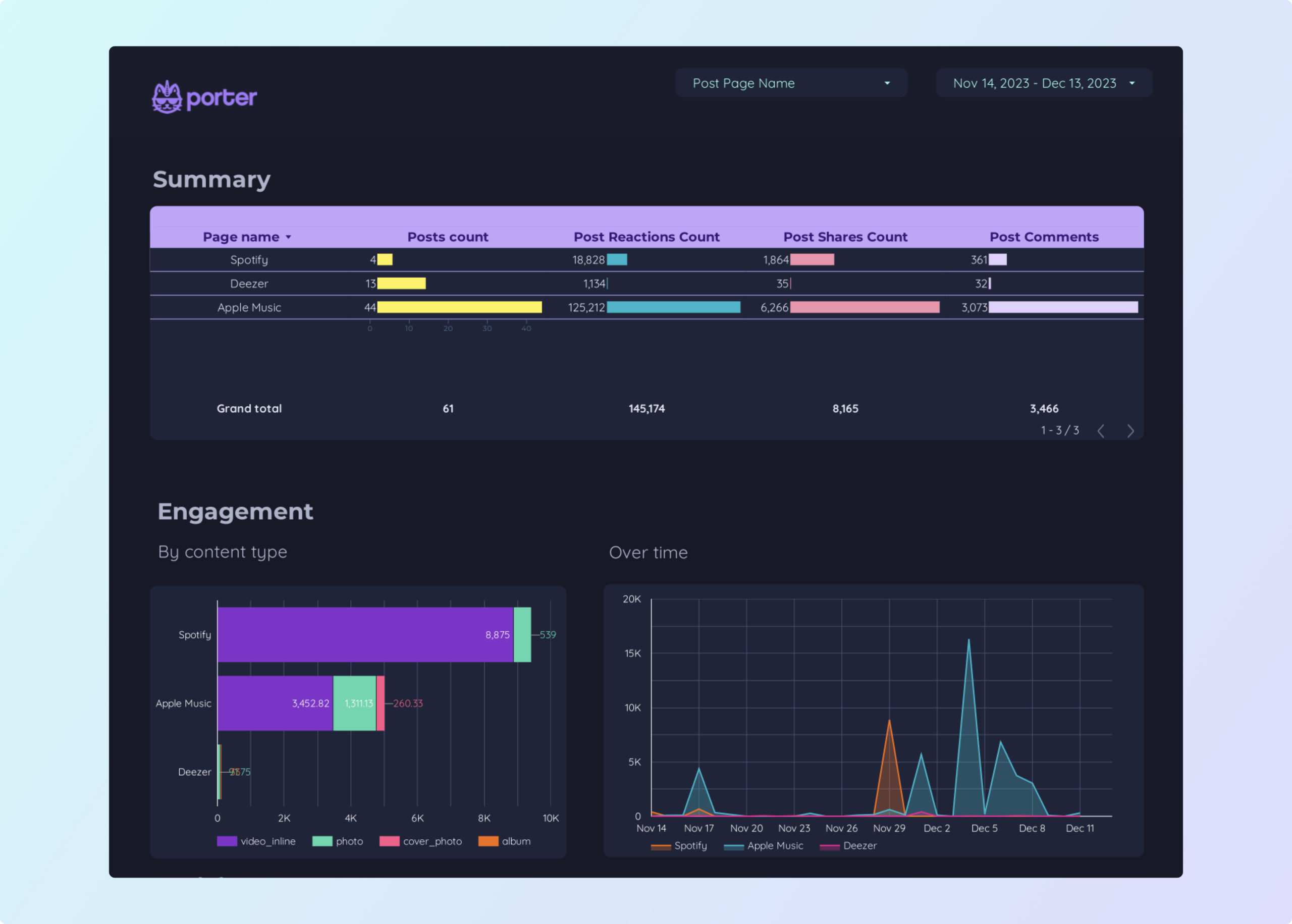
Facebook Insights competitors Report template for Marketing teams and agencies
Track key metrics like CTR, conversion rate, and share of voice with the Facebook Insights competitors report template. Analyze performance across demographics, channels, and timeframes. Leverage social media and Facebook public data to refine your strategy. Perfect for marketing teams aiming to consolidate insights and achieve specific goals.
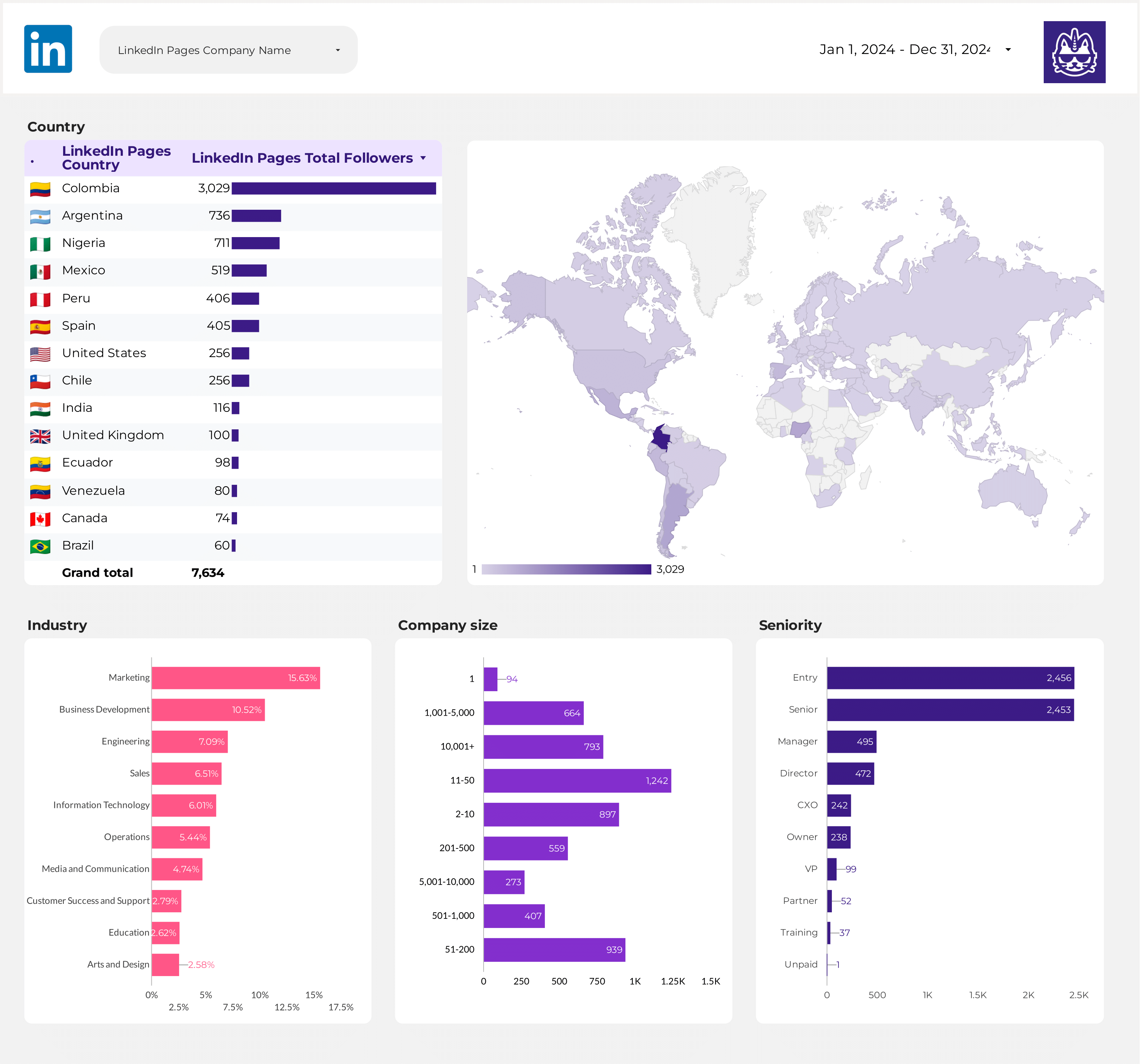
LinkedIn Pages Report template for Marketing teams and agencies
Optimize your LinkedIn Pages strategy with this report template. Track CTR, conversion rate, and engagement. Analyze metrics by audience, objectives, and channels. Measure performance across demographics and timeframes. Perfect for marketing teams to refine strategies and achieve LinkedIn goals.
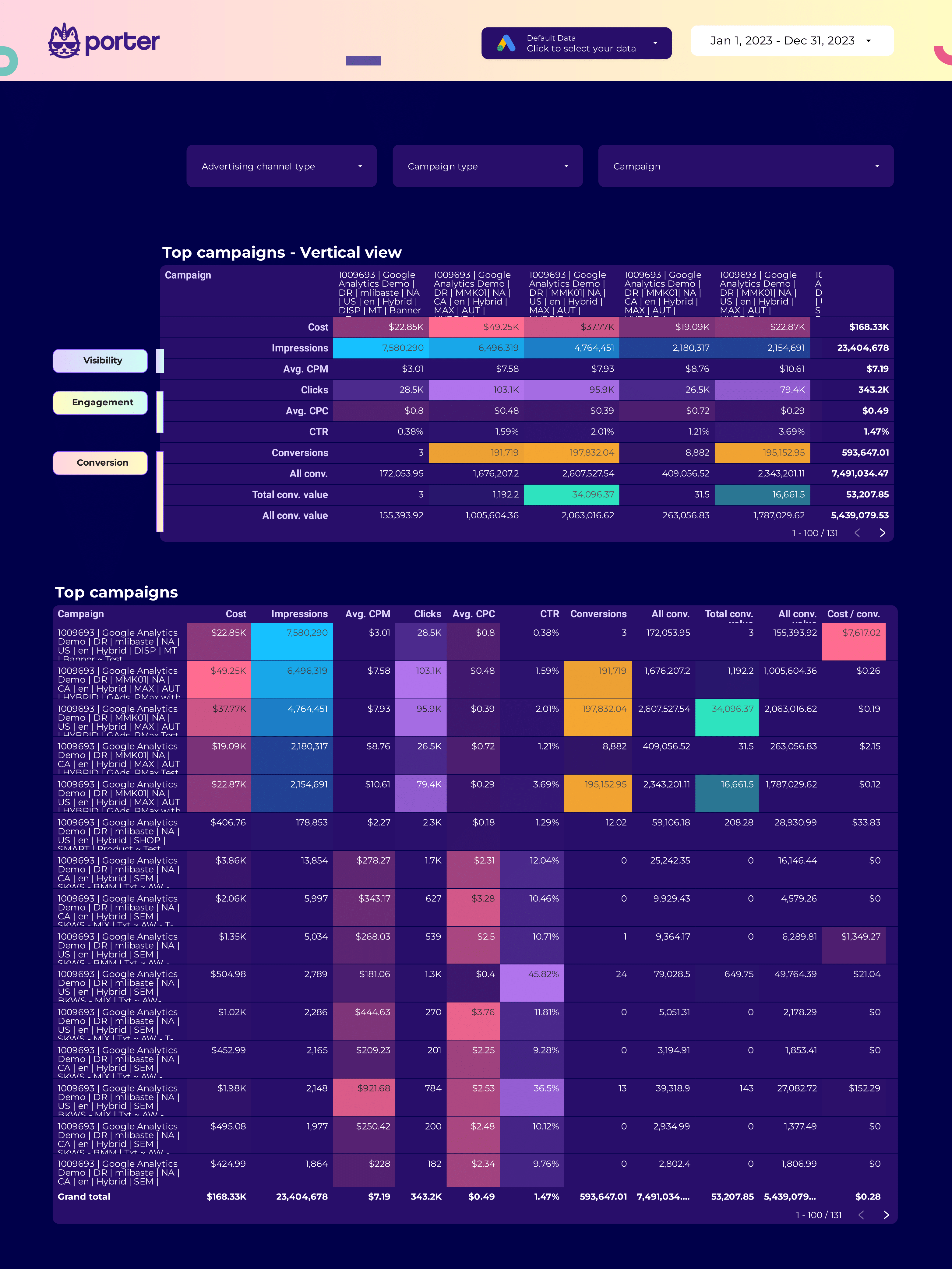
SEM Report template for Marketing teams and agencies
Optimize your SEM strategy with this report template. Analyze cost per conversion, conversion rate, and ROAS. Measure click-through rate, social media engagement, and organic search ranking. Segment by audience, content, platform, and more. Perfect for PPC specialists to track Google Ads and Paid Media performance.
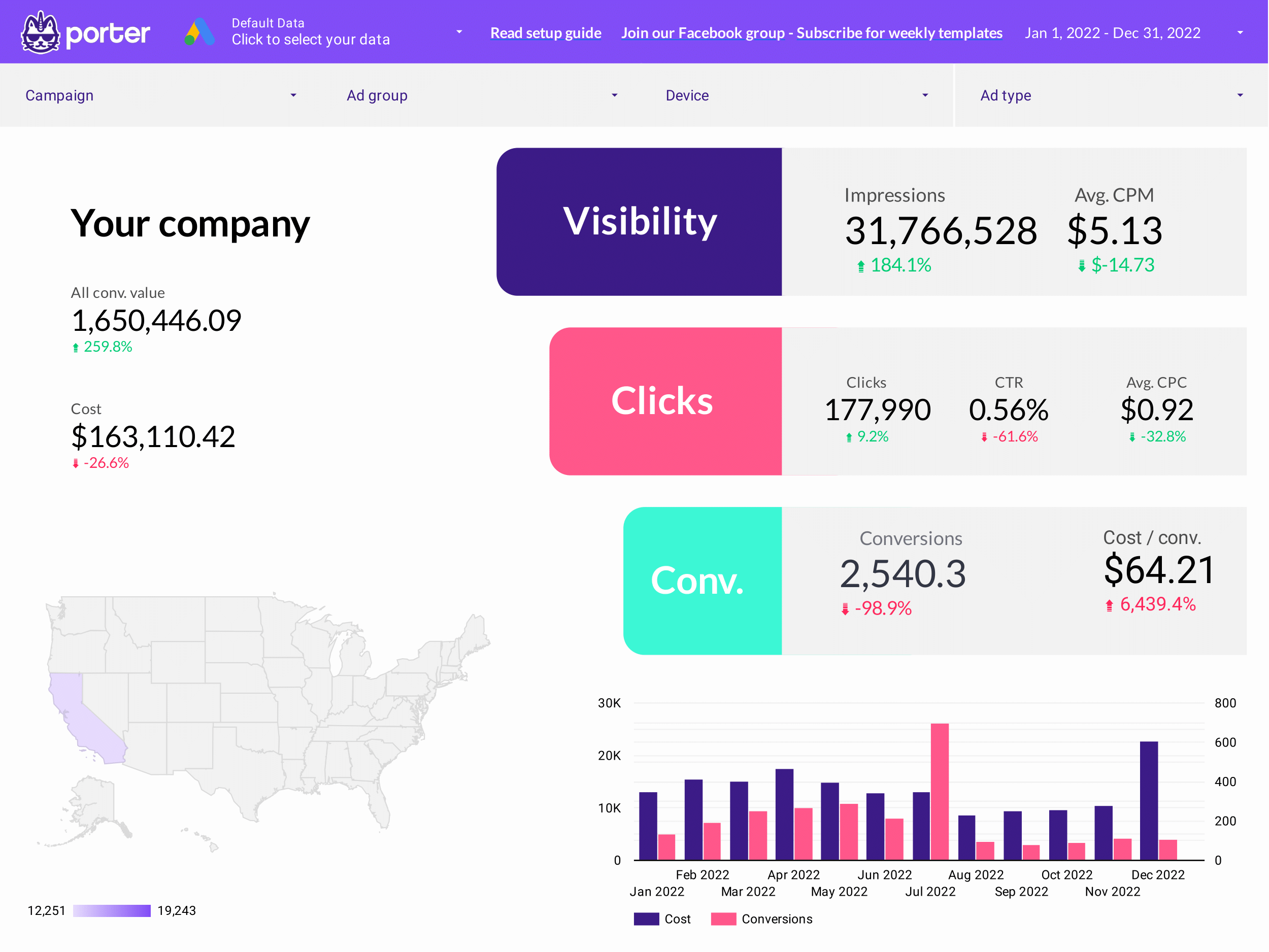
Google Ads Report template for Marketing teams and agencies
Optimize your PPC strategy with this Google Ads report template. Track key metrics like conversion rate, ROI, and CTR. Analyze performance by campaign type, goal, and status. Segment data by age, gender, and location. Ideal for marketing teams to measure and refine paid media campaigns effectively.
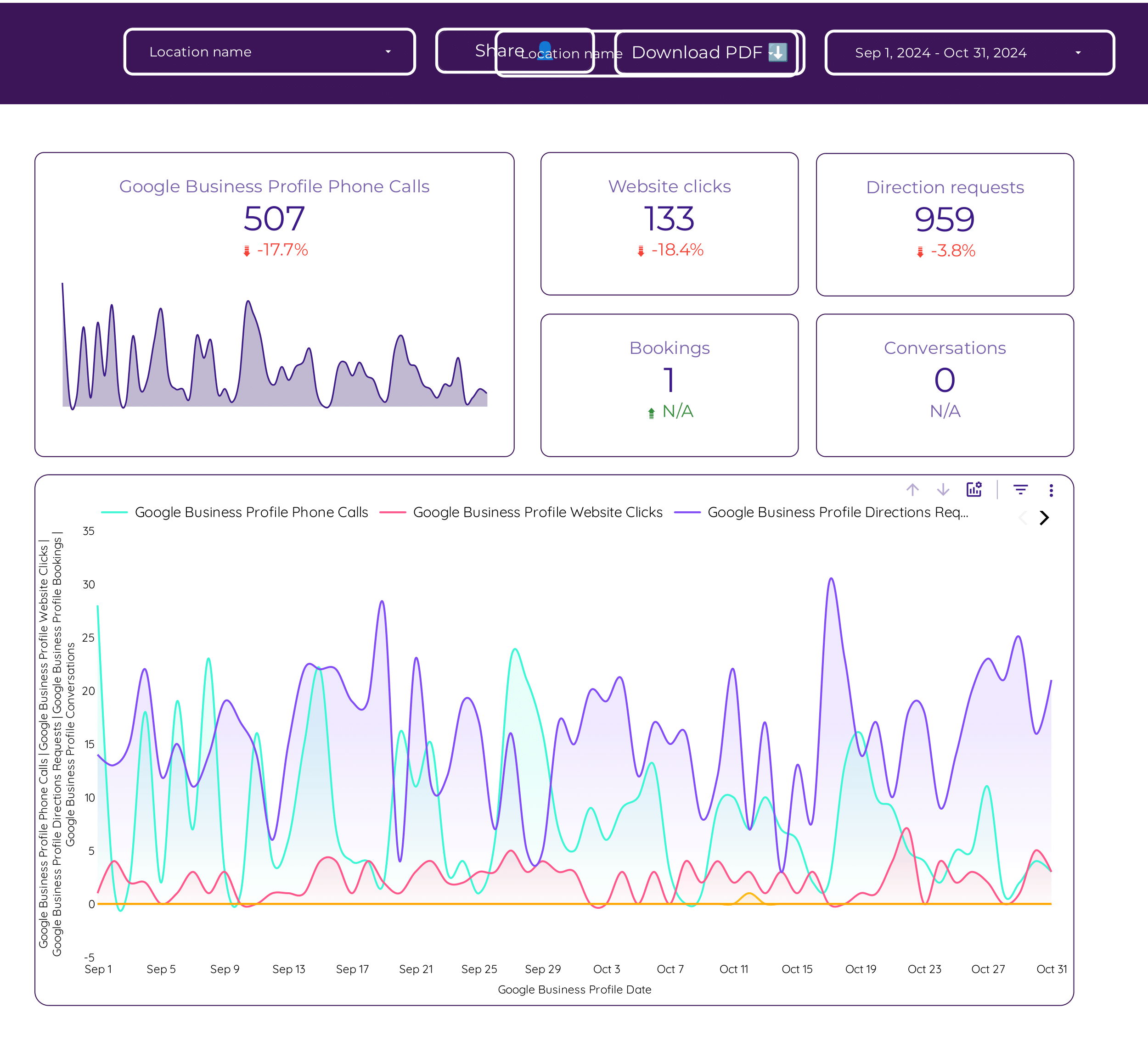
Local SEO Report template for Marketing teams and agencies
Optimize your local SEO strategy with this Local SEO report template. Track CTR, conversion rate, and cost per conversion. Analyze keyword ranking, organic traffic, and local pack visibility. Segment data by demographics, location, and behavior over time. Perfect for marketing teams aiming to achieve specific goals and improve performance.
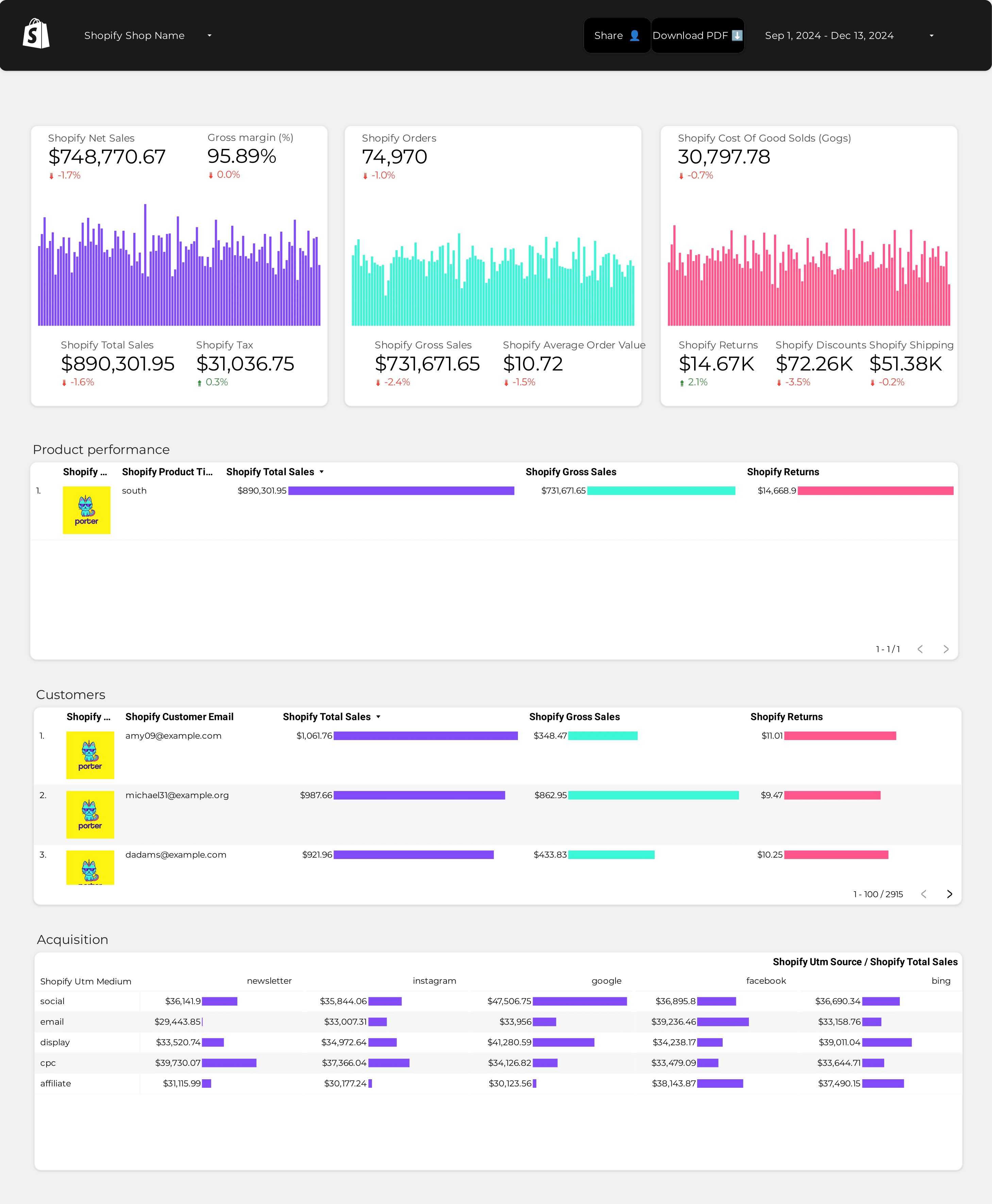
Shopify Report template for Marketing teams and agencies
Analyze key metrics like revenue, average order value, and conversion rate with this Shopify report template. Track cost per acquisition and return on ad spend. Segment by audience, messaging, and channels. Ideal for e-commerce marketing teams to unify insights and optimize strategies. Perfect for monitoring Shopify store performance across various timeframes.
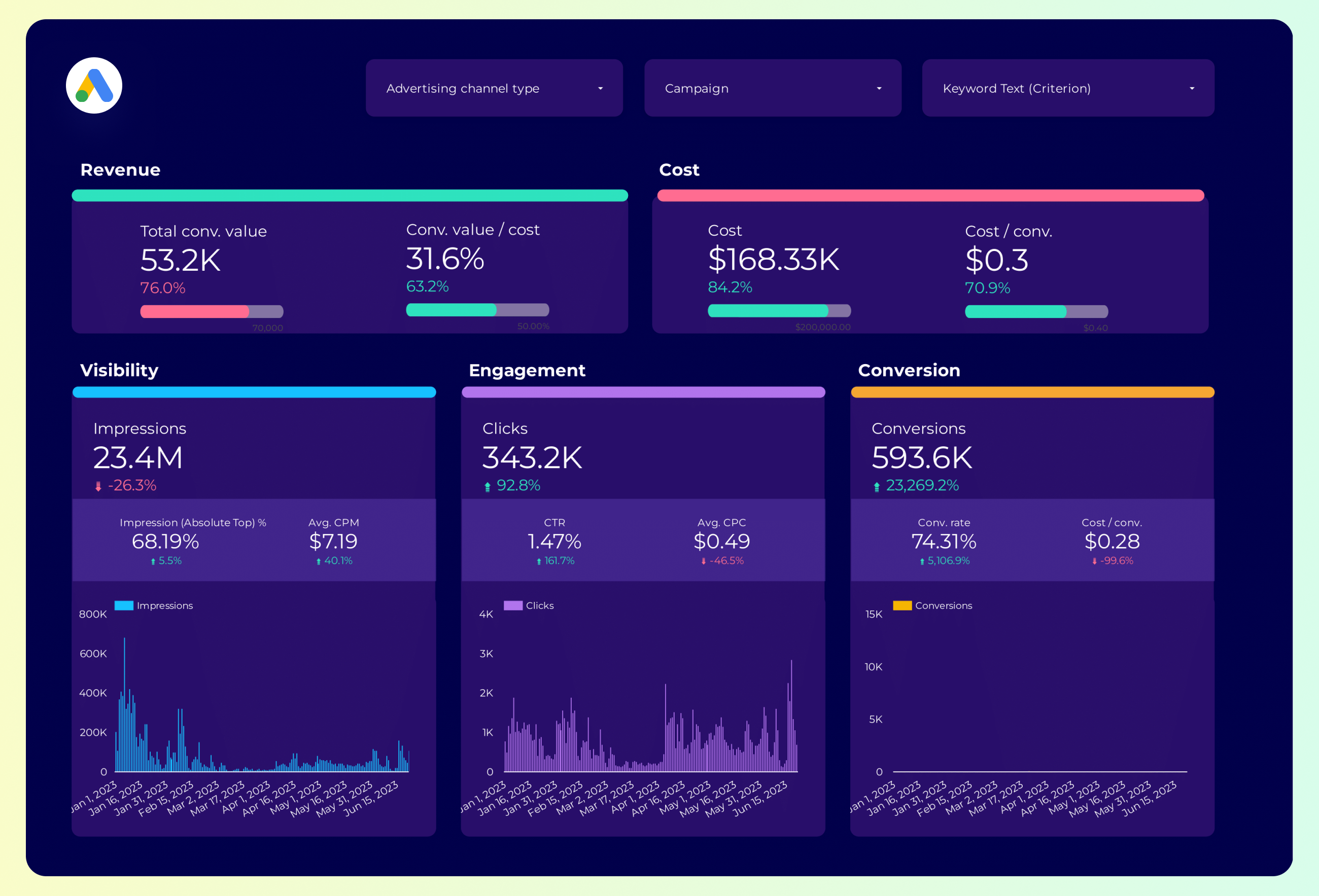
Google Ads Report template for Marketing teams and agencies
Optimize your PPC strategy with this Google Ads report template. Track conversion rate, cost per conversion, and CTR. Analyze by campaign type, audience, and time. Perfect for marketing teams to measure performance and align with objectives. Consolidate data from Google Ads and Paid Media for actionable insights and enhanced campaign management.
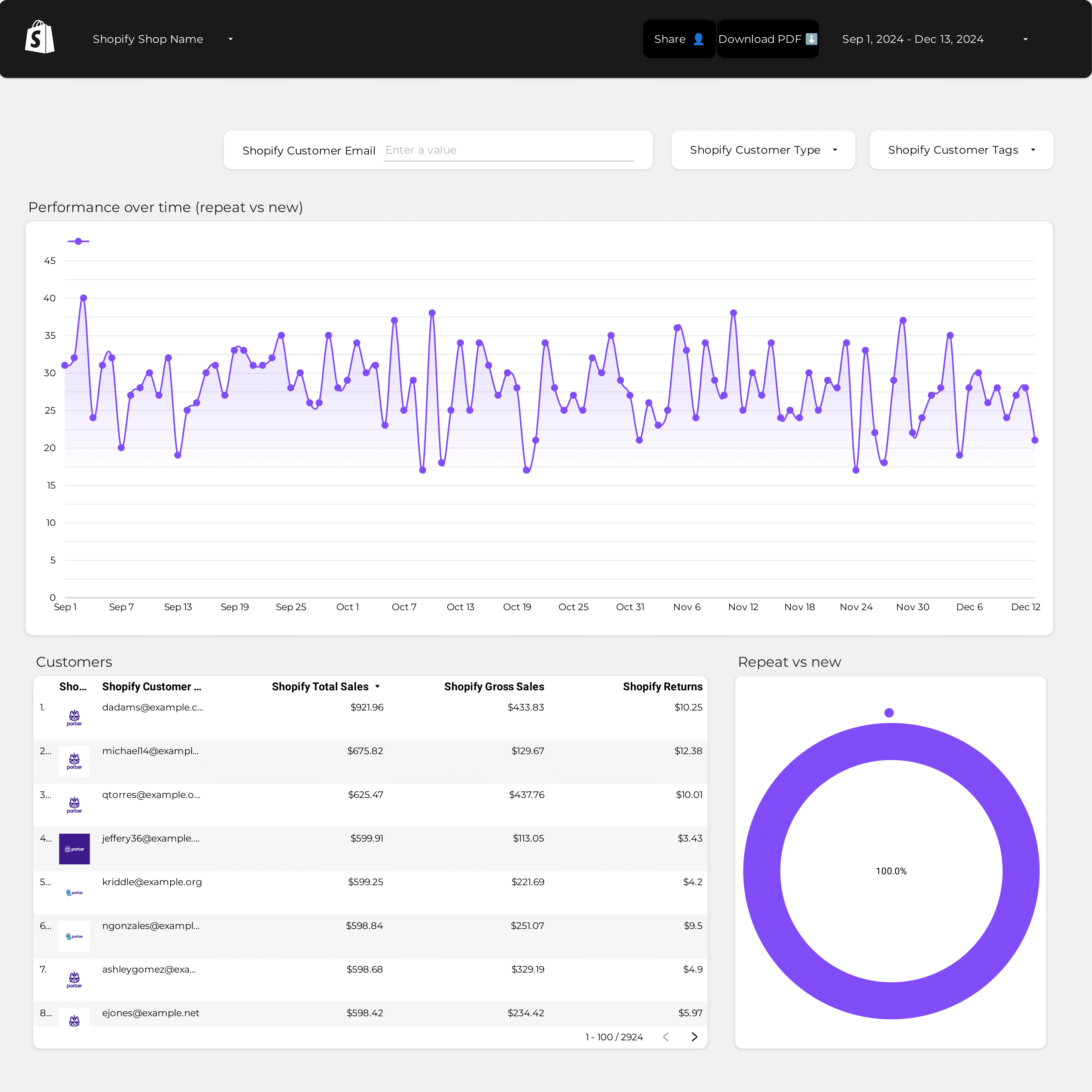
LTV Report template for Marketing teams and agencies
Analyze key metrics such as conversion rate, CPA, and CLTV with this LTV report template. Ideal for e-commerce and Shopify, it helps marketing teams track customer segmentation and channel attribution. Gain insights by age, location, and income to refine your strategy and boost sales performance.

